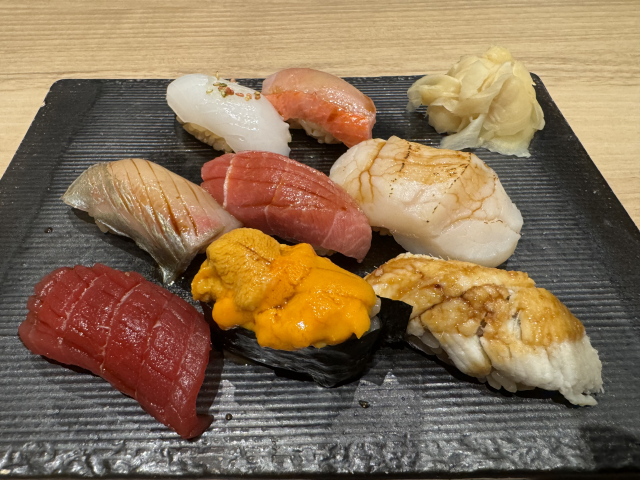
What comes to mind when you hear the words “Japanese cuisine? In addition to sushi and tempura, there are many other delicious dishes unique to each region. In this article, we will introduce 20 carefully selected dishes that represent Japanese food culture, from standard Japanese dishes to regional specialties. You are sure to find your next favorite dish!
20 Best Japanese Foods
1.Sushi

Sushi is a representative of Japanese cuisine and is loved around the world. Nigirizushi, makizushi, chirashizushi, and other diverse styles are available. Nigirizushi made with fresh seafood, in particular, is a gem of delicate taste and artisan skill.
The appeal of sushi lies in the fact that although it is a simple combination of rice and seafood, the quality of the ingredients and the cooking method allow for endless variations to be enjoyed.
Another appeal of sushi is that freshness of ingredients is vital, and since the chefs carefully select and prepare the best items of the day, you can experience a different taste each time you visit.
2.Tempura
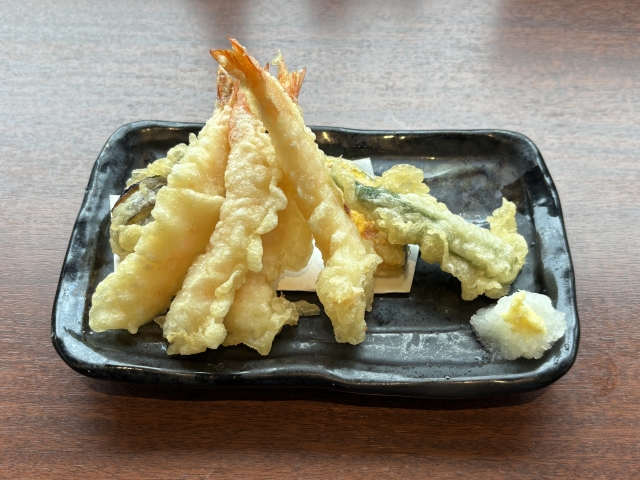
Tempura is a simple dish made by deep frying seafood or vegetables in a light batter. Tempura is a typical Japanese deep-fried dish that strikes a perfect balance between its crispy texture and the juiciness of the ingredients inside.
The deliciousness of tempura is determined by the attention to detail in temperature control, batter composition, and timing of frying. Tempura is also very appealing because it often uses seasonal ingredients, allowing you to enjoy the flavors of the season.
In particular, seafood such as prawns and kisses, and seasonal vegetable tempura are exquisite, and are served simply with salt or tempura sauce, which is the Japanese way.
3.Ramen
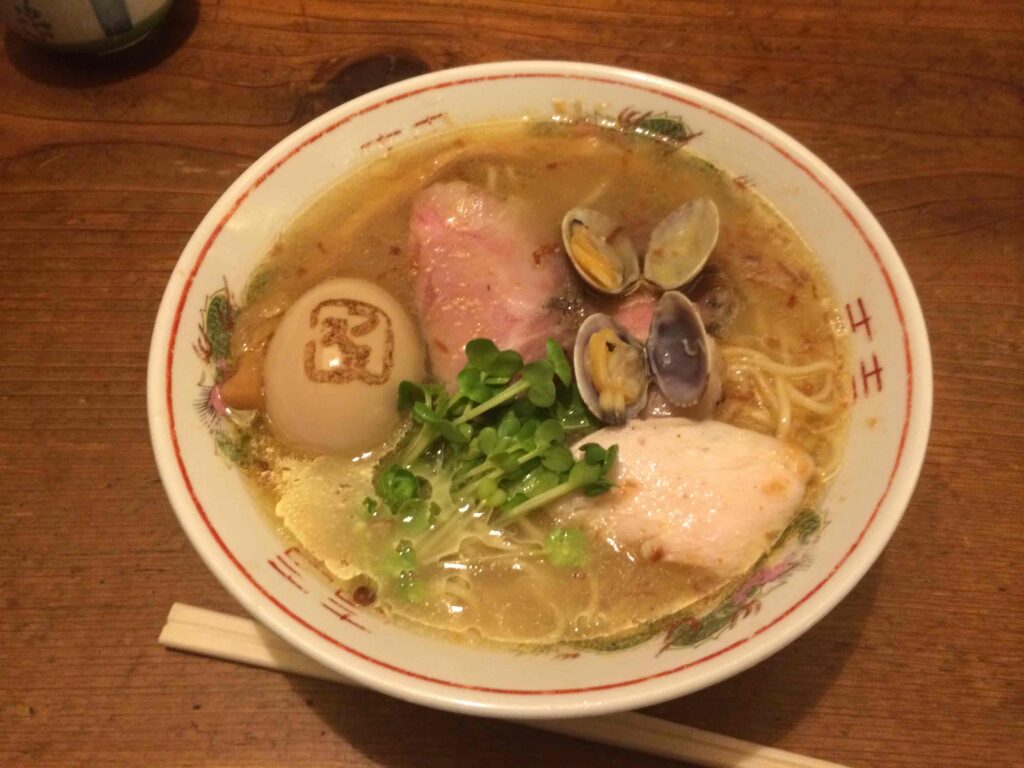
Ramen is a national dish that exists in a wide variety of variations throughout Japan. In addition to basic soups such as tonkotsu (pork bone), shoyu, miso, and shio, each region has its own unique style and toppings. For example, Hakata ramen with its thin noodles and thick tonkotsu broth, Sapporo ramen with its rich miso broth, and Tokyo ramen with its light, soy-sauce-based broth, each region offers its own distinctive flavor.
Another appeal of ramen is that it is constantly evolving, with new and creative ramen dishes appearing one after another in recent years.
4.Sukiyaki

Sukiyaki is a one-pot dish of thinly sliced beef, vegetables, tofu, shirataki mushrooms, and other ingredients simmered in a sweet and spicy sauce, and is a popular Japanese dish especially during the cold season. It features a sauce made by adding soy sauce, mirin (sweet cooking sake), and sugar to dashi (Japanese soup stock), called warishita, which allows the ingredients to soak up the flavors as they are simmered.
The most common way to enjoy sukiyaki is to dip the cooked ingredients in beaten egg, which adds a mildness to the dish that makes it even more delicious.
Sukiyaki is a traditional Japanese nabe dish that can be enjoyed with family and friends to create a warm dining experience.
5.Udon

Udon is a noodle dish popular throughout Japan, and its simplicity allows for a profound flavor. The combination of firm noodles and a refreshing broth, such as kake udon, or a variety of toppings and soups, such as curry udon or meat udon, is very appealing.
Sanuki udon, in particular, is famous for its firmness and smoothness, and is loved by many udon fans. Another reason for udon's popularity is the ability to enjoy different ingredients and cooking methods each season.
6.Oden
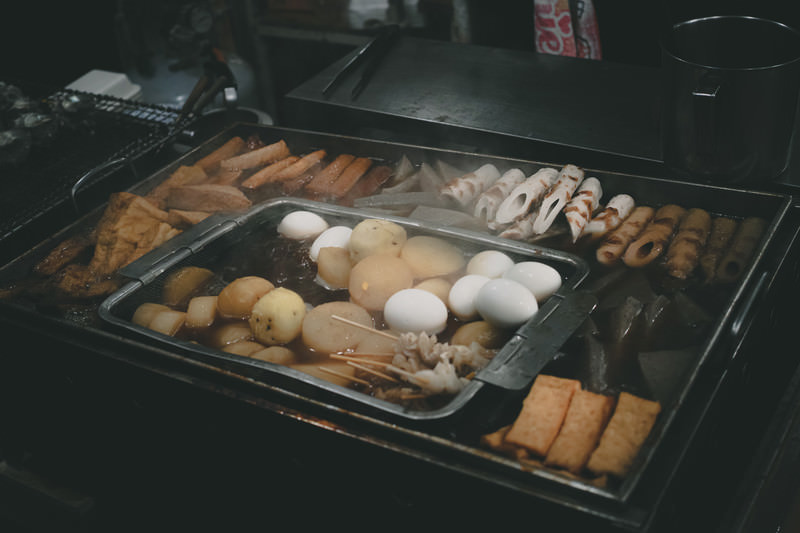
Oden is a staple winter dish in Japan, where you can enjoy daikon radish, konnyaku, egg, fish paste, and other ingredients simmered in dashi broth. The light broth soaks into the ingredients and warms both body and soul with each bite.
It is a dish with a rich regional flavor, with the taste of the broth and choice of ingredients varying from region to region, such as Kansai-style and Kanto-style. Oden made at home has its own unique flavor, and its familiarity is also a major appeal of oden. The simple yet profound flavor of oden continues to attract more and more oden fans.
7.Shabu-shabu
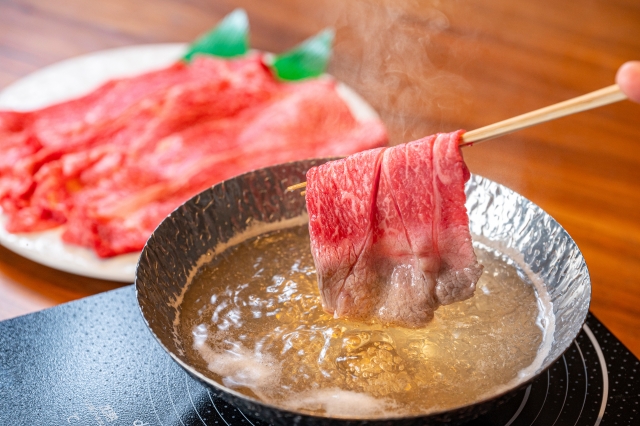
Shabu-shabu is a Japanese nabe dish in which thinly sliced beef or pork is quickly dipped in hot broth such as kombu dashi and served with ponzu or sesame sauce. The thinness of the meat and the short cooking time bring out the natural flavor and tenderness of the meat. Vegetables, tofu, and mushrooms can also be enjoyed together, making it a healthy and nutritionally balanced dish.
In addition, shabu-shabu can be enjoyed in a variety of styles, as it can be arranged with the ingredients and sauce of your choice.
8.Okonomiyaki
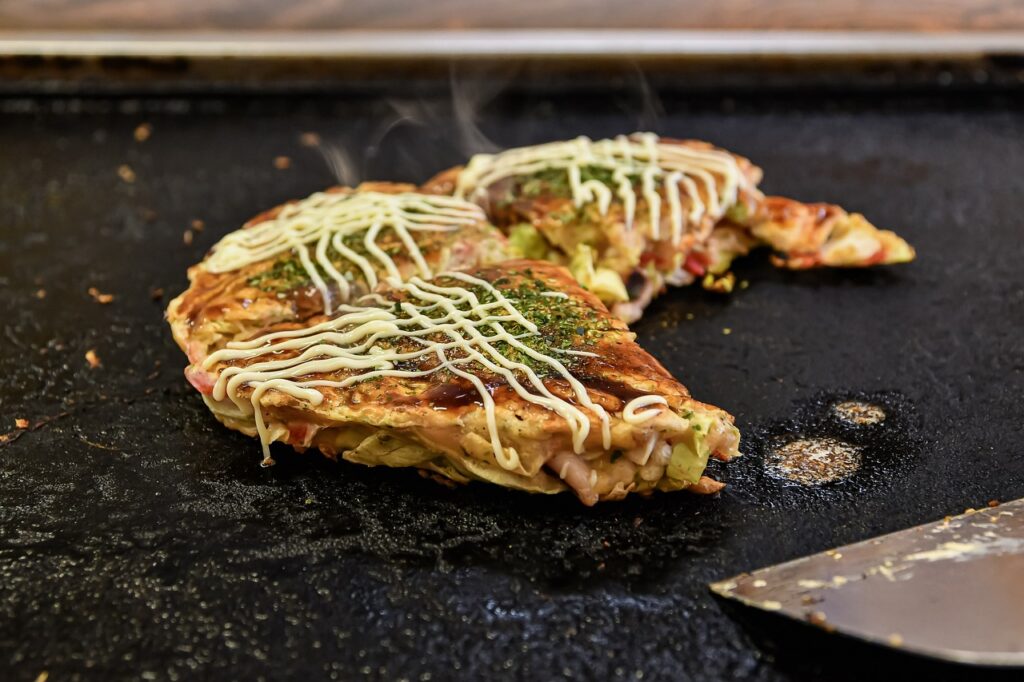
Okonomiyaki is a typical Kansai dish made by adding ingredients such as cabbage, pork, and seafood to flour dough and grilling it on a teppan. The most enjoyable aspect of okonomiyaki is that you can freely arrange the ingredients. Since you can customize the toppings, sauce, and even the way mayonnaise is applied to your own liking, it is easy to make at home and enjoy it with everyone.
There are also many regional variations such as Hiroshima-style okonomiyaki and monjayaki, making it an appealing dish to eat while traveling.
9.Miso soup
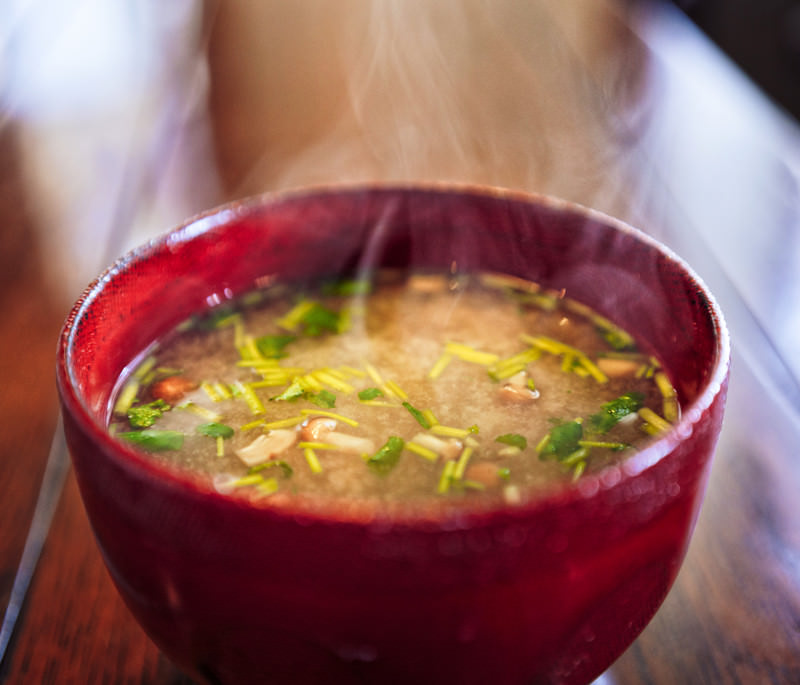
Miso soup is one of the most familiar Japanese home-style soup dishes. It is a simple dish of miso soup stock in which miso is dissolved and ingredients such as tofu, wakame seaweed, vegetables, and fish are added, but its flavor varies from region to region and from household to household.
The flavor varies greatly depending on the type of miso (red miso, white miso, combined miso, etc.) and the way the dashi is prepared, so every time you eat it, you will discover something new. From breakfast to dinner, miso soup often appears on the dinner table and warms the body and soul, making it an integral part of the Japanese lifestyle.
10.Eel kabayaki
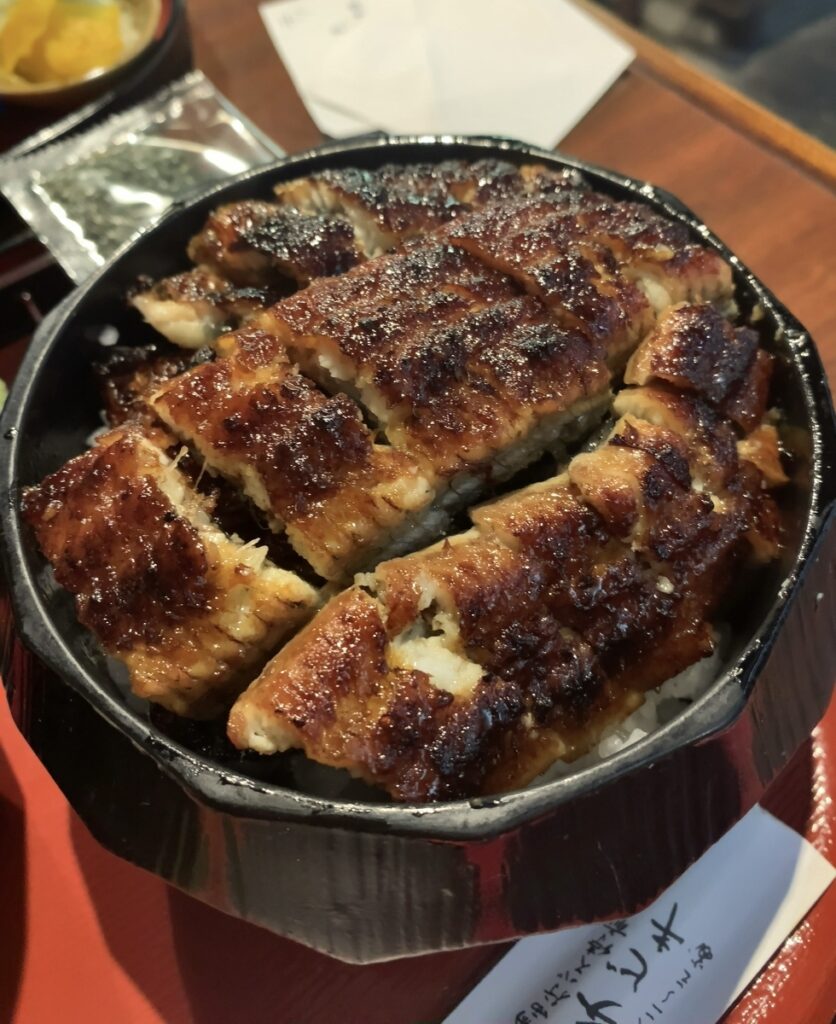
Eel kabayaki is a dish of plump eel grilled in a sweet and spicy sauce, and is a typical summer dish in Japan. It is especially popular on the day of the ox in Doyou, when it is customary to eat eel as a dish to keep up one's stamina. Kabayaki has a perfect balance between the fragrance of the sauce and the tenderness of the eel, and the flavor spreads in your mouth as soon as you put it in your mouth.
There are also a variety of dishes using kabayaki eel, such as unaju (eel stew) and hitsu-mabushi (eel stew), offering a rich variety of ways to eat it. It also has an aspect as a luxury food and is popular as a treat for special occasions.
11.Takoyaki

Takoyaki is a snack-like Japanese dish that originated in the Kansai region. The flour dough is mixed with chopped octopus, green onions, tenkasu, and other ingredients, and then grilled on a round griddle. It is usually topped with sauce, mayonnaise, dried bonito flakes, and aonori (green laver).
In addition to being easily prepared at home, takoyaki is also popular at takoyaki specialty restaurants and food stalls, and is loved by both children and adults. It is also popular as an easy party dish and can be enjoyed by making it at home with friends and family.
12.Yakitori
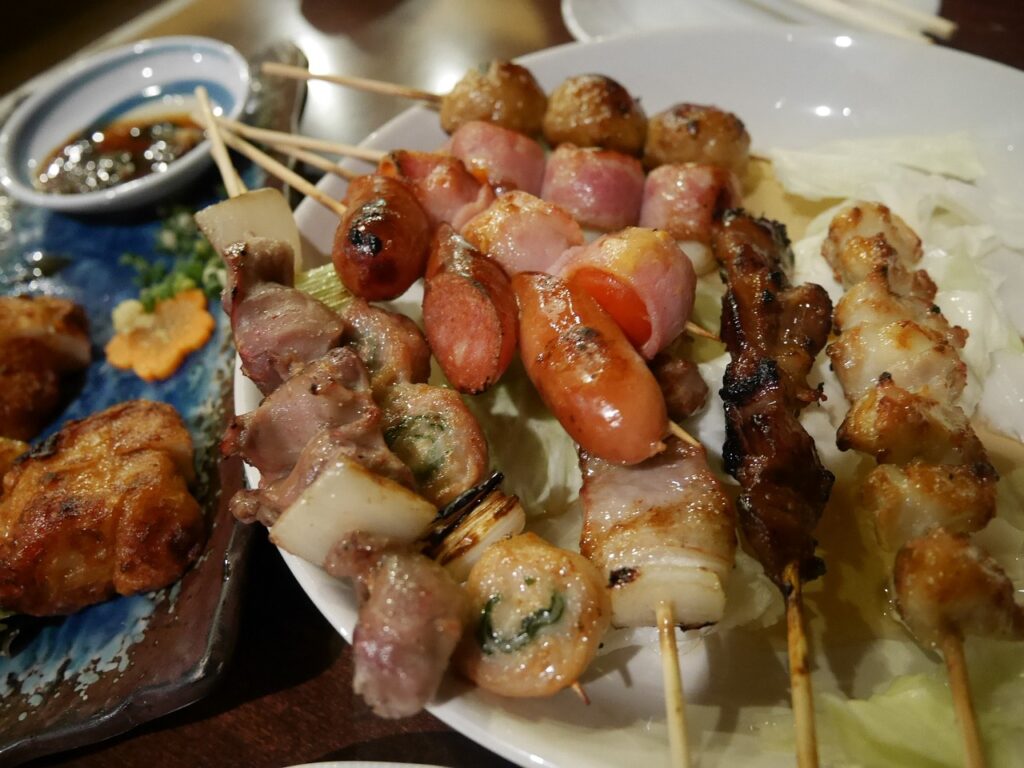
Yakitori is a simple dish of chicken meat skewered and grilled over charcoal. There are many variations in seasoning, such as tare-yaki and shio-yaki, and you can enjoy the different textures and flavors of each part of the chicken. Each skewer has its own character, such as momo (thigh), negima (green onion), tsukune (chicken ball), and gizzard (gizzard), making it an enjoyable choice according to one's preference.
Yakitori is an essential part of Japan's izakaya culture and goes well with beer and sake. And because it is easy to prepare at home, it is also an excellent choice for everyday meals and parties.
13.Oyakodon
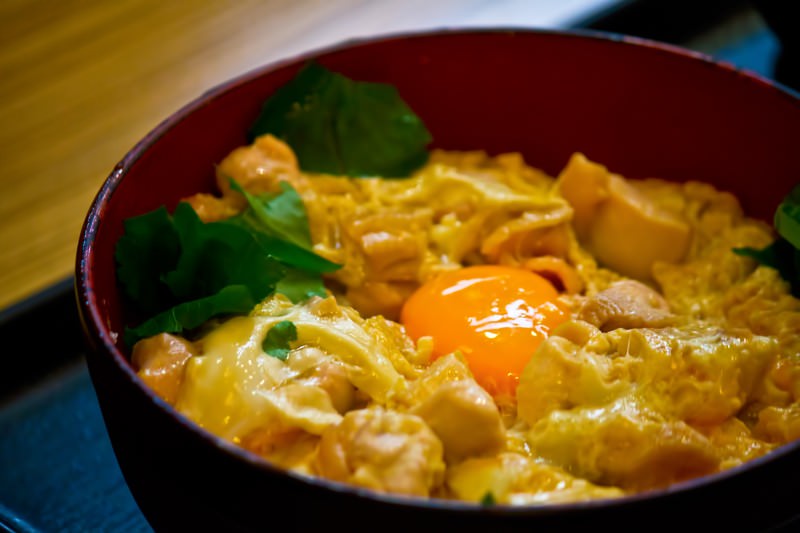
Oyakodon is a bowl of rice topped with chicken and egg simmered in dashi broth. Oyako-don is characterized by the exquisite harmony of the fluffy egg and tender chicken meat combined with the flavor of dashi broth. The dashi broth contains soy sauce, mirin (sweet cooking rice wine), sugar, and other ingredients, and its sweet and spicy flavor goes perfectly with the rice.
Because it is easy to prepare, it is loved as a standard menu item at home. The dashi broth and toppings can be freely arranged, and the fun of creating your own favorite oyakodon is part of its appeal.
14.Nabe (hot pot)
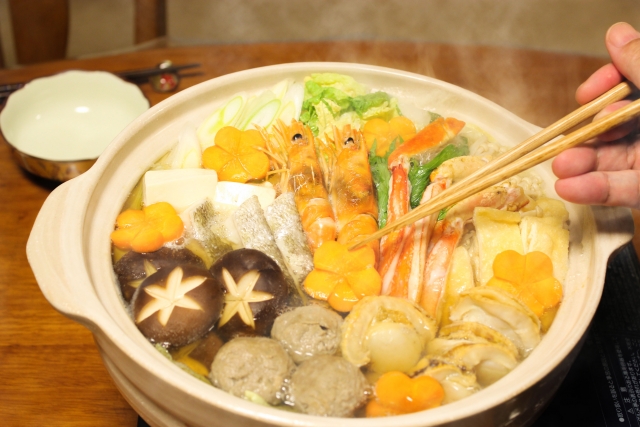
Nabe (hot pot) is an essential warming dish during the cold season in Japan. Yose-nabe is an orthodox style of nabe in which seafood, meat, and vegetables are simmered in a simple broth, allowing you to enjoy the original flavor of the ingredients. Chanko-nabe, on the other hand, is known as a meal for sumo wrestlers and is characterized by a wide variety of ingredients and generous portions. Chanko-nabe is often shared with family and friends, and plays an important role as a place for communication. You can arrange nabe dishes with your favorite ingredients and soup, so it is fun to enjoy nabe in your own way.
15.Sashimi
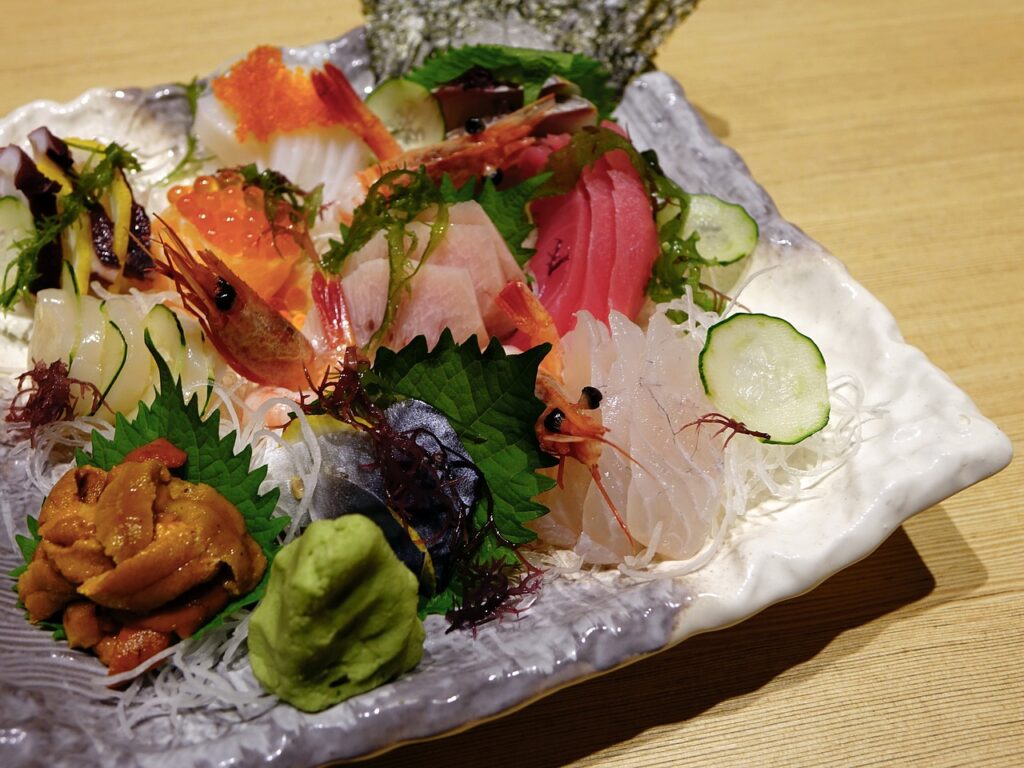
Sashimi is raw slices of seafood cut into various shapes and thicknesses and eaten together. Soy sauce wasabi and decorative slices are also eaten together. To make good sashimi, especially high-quality, fresh fish is necessary, and the chef's craftsmanship and experience are also essential. Sushi is a well-known Japanese fish dish, but sashimi does not come with rice that has been nigiri (rice cooked in a small bowl) like sushi. You receive the “neta” part of sushi, the slices of seafood.
In Japan, which has long been surrounded by the sea and has had access to fresh seafood, it is common to eat fish caught in the sea, cut into pieces, and eaten raw.
16.Karaage
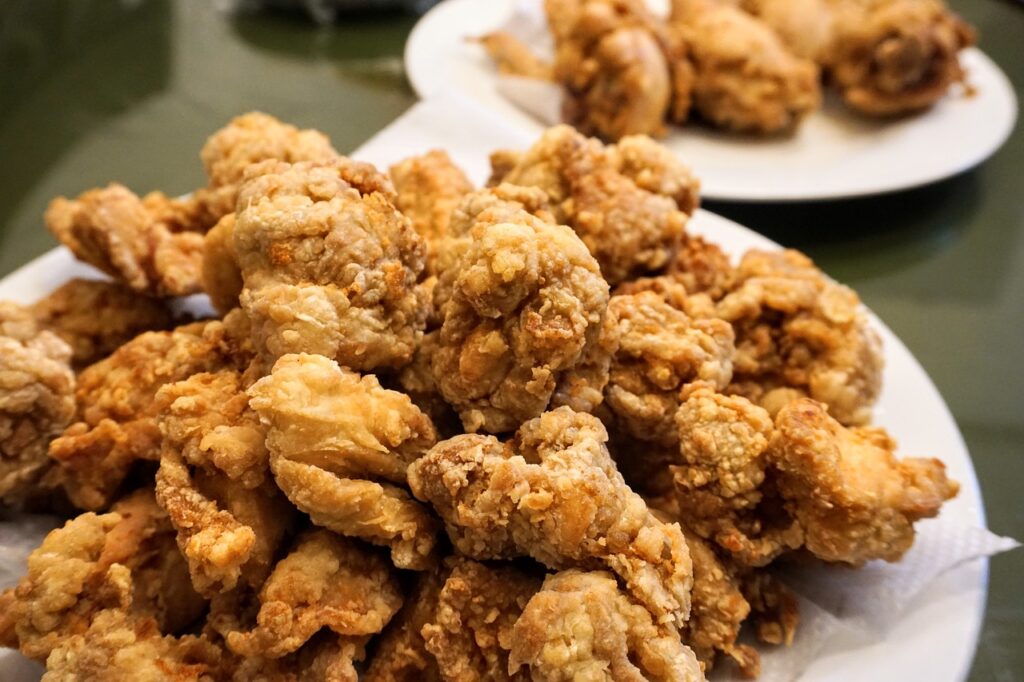
Karaage is a simple dish consisting of seasoned chicken meat, coated with potato starch or flour, and deep fried in oil. Crispy on the outside and juicy on the inside, it is a staple in home cooking and as a side dish for lunch boxes. Each household and restaurant has its own unique seasoning and cooking method, such as seasoning with garlic and ginger, and the wide range of arrangements is one of its charms. Karaage is loved by many people because it is easy to prepare and tastes good even when cold.
17.Soba
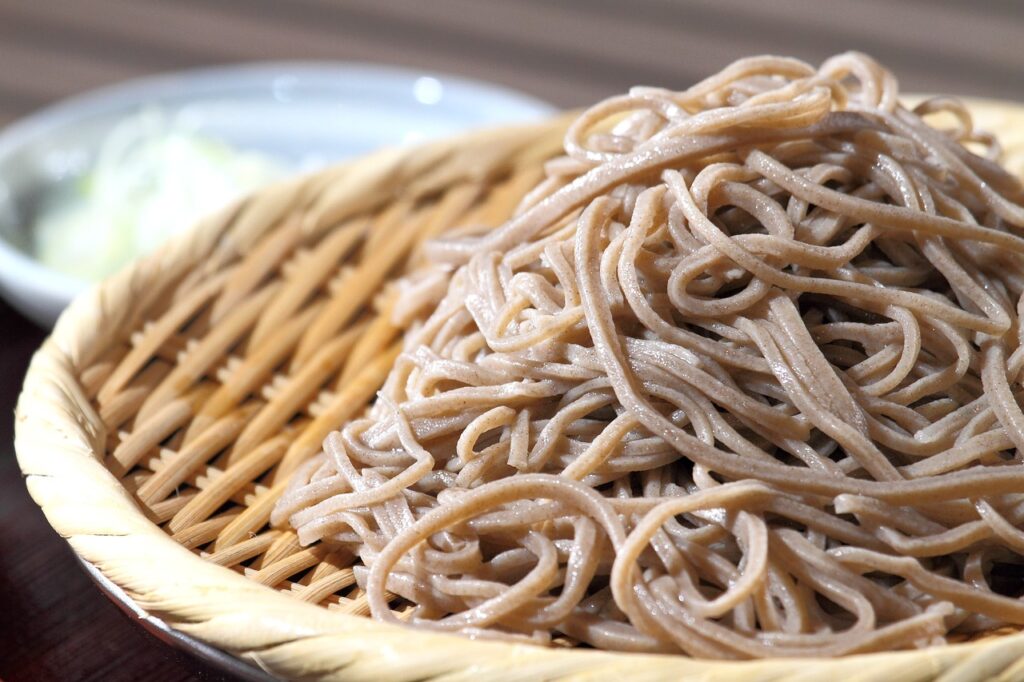
Soba is a traditional Japanese noodle dish, also known as New Year's Eve soba. It can be enjoyed as cold zaru-soba or hot kakesoba, depending on the season and your mood. Soba is also popular as a healthy food with the flavor of buckwheat flour and the smoothness of the noodles as they glide down one's throat.
Each region has its own unique soba, such as Shinshu soba, Izumo soba, and Jyuwari soba, which differ in flavor depending on the combination of buckwheat flour and whether or not the buckwheat is used as a glue. They can be enjoyed with a simple dipping sauce or with gorgeous tempura.
18.Cooked rice (Takikomi-gohan)
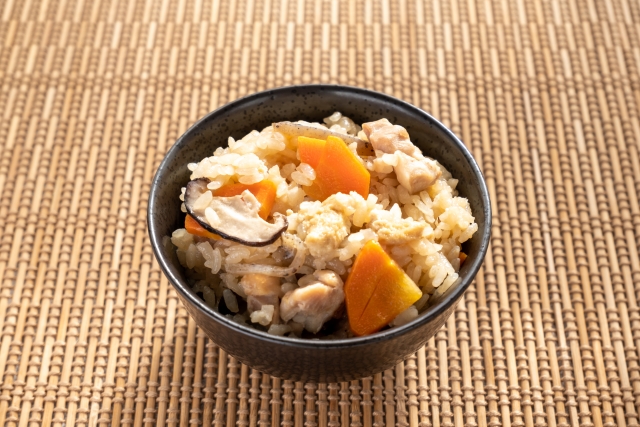
Cooked rice(Takikomi-gohan) is a dish in which rice is cooked with seasonal vegetables, seafood, mushrooms, and other ingredients. The flavor of the ingredients soak into the rice, giving it a flavorful finish. The appeal of this dish is that it can be enjoyed with different ingredients in each season, such as mushroom rice in the fall and bamboo shoot rice in the spring.
Takikomi-gohan is a dish that is enjoyed not only for lunch boxes and everyday meals, but also for special events and celebrations, and adds color to the dining table.
19.Wagashi

Wagashi is a traditional Japanese sweet made from rice cake, bean paste, agar, and other ingredients. Wagashi are characterized by their beautiful appearance and delicate sweetness that symbolize nature in each of the four seasons.
There are a wide variety of wagashi from all over Japan, such as sakura mochi, dorayaki, yokan (thick bean jelly), and dango (dumplings). Wagashi are also closely related to the tea ceremony and go well with matcha (powdered green tea). The variety of flavors created from simple ingredients is popular among foreign tourists, and they are also popular as souvenirs that allow visitors to experience Japanese culture.
20.Katsu-don

Katsu-don is a hearty bowl of rice topped with a freshly fried pork cutlet stewed with onions in a sweet and spicy broth and topped with a beaten egg. The crispy cutlet and fluffy egg are a perfect match with the rice, and each bite is a satisfying experience. It is often eaten before a game or an exam to “win(katsu in Japanese),” and is popular in Japan as a food of good luck.
What is the appeal of Japanese Food?
Reasons Why Japanese Food is Loved Around the World
Healthy and Nutritionally Balanced
Japanese Food is highly valued around the world for its healthy and balanced nutritional content. Ingredients are mainly fresh seafood, vegetables, legumes, and seaweed, and the cuisine is characterized by its low calorie content while providing all the necessary nutrients.
In addition, many of the dishes are prepared without much oil, making them easy on the stomach, making them popular among health-conscious people. Furthermore, by incorporating many fermented foods such as miso, soy sauce, and natto (fermented soybeans), it is expected to help regulate the intestinal environment.
Beautiful Presentation
The visual beauty of Japanese Food is one of its major attractions. The use of seasonal ingredients and colorful, well-balanced presentation makes it possible to enjoy the food even before eating it. Careful attention is also paid to the placement of dishes and the choice of utensils, often making it look like a work of art. This beauty is what makes Japanese cuisine even more appealing.
Simple cooking methods that bring out the flavors of the ingredients
In Japanese Food, simple cooking methods are often used to enhance the original flavors of the ingredients. For example, sashimi and sushi are often prepared with little or no modification, allowing the ingredients to be enjoyed as they are.
Seasonings, such as soy sauce, salt, and dashi, are simple and do not interfere with the flavor of the ingredients, allowing the natural flavors of the ingredients to be enjoyed. These cooking methods give Japanese Food its “depth of flavor.
Healthy and varied food culture
Value Seasonal Ingredients
Japanese Food places great importance on seasonality. Dishes with cherry blossom petals in spring, chilled udon noodles and chilled tofu in summer, matsutake mushrooms and chestnuts in fall, oden and nabe dishes in winter, and many other seasonal ingredients can be enjoyed. This allows one to enjoy the fresh flavors of each season, making eating itself a special experience that evokes the changes of the seasons.
Many fermented foods
Japanese Food contains many fermented foods, which are good for one's health. Fermented foods such as miso, soy sauce, natto (fermented soybeans), and pickles have the effect of regulating the intestinal environment, aiding digestion, and strengthening the immune system. The variety of fermented foods and the ingenuity with which they are incorporated make Japanese cuisine stand out as a healthy food culture.
Various cooking methods and types of dishes
Japanese Food offers a wide variety of cooking methods, such as boiling, grilling, steaming, deep-frying, and dressing, each of which offers different textures and tastes. This allows the same ingredients to be enjoyed as completely different dishes with different approaches, enriching the dining table without becoming boring. The rich variety of cooking methods further broadens the appeal of Japanese cuisine.
Summary (20 Best Japanese Foods you must try!)
Japanese Food is loved by people around the world for its diversity and deep flavors. From typical dishes such as sushi and tempura to home-style dishes such as shabu-shabu and okonomiyaki, every dish is designed to maximize the flavor of the ingredients. Another appeal of Japanese Food is that many dishes are highly health-conscious.
